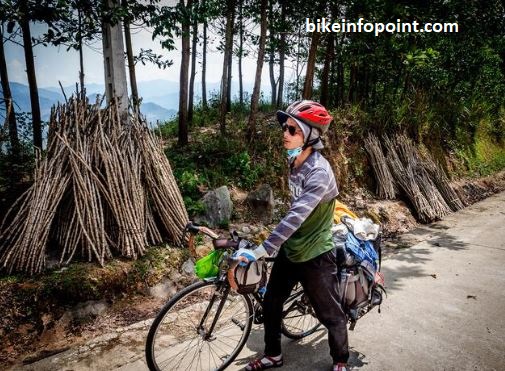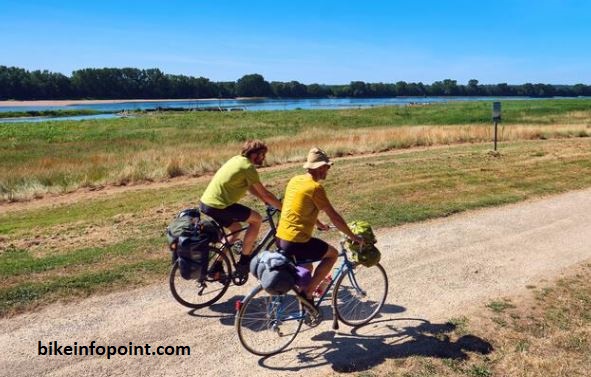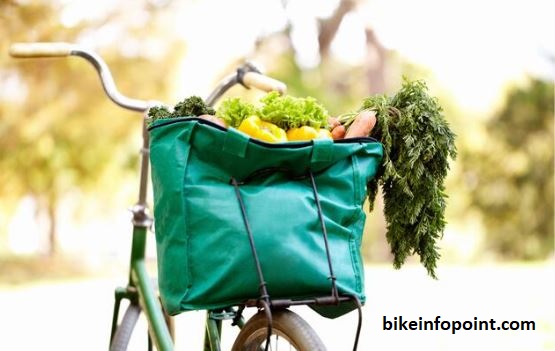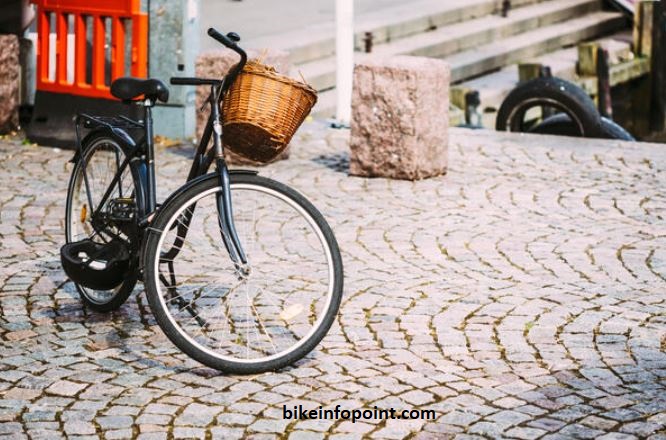
What to eat on long bike rides
Importance of nutrition for long bike rides
Nutrition plays a pivotal role in the success and enjoyment of long bike rides. Proper fueling before, during, and after your ride can make the difference between a satisfying adventure and a challenging ordeal. The importance of nutrition for long bike rides can be summarized as follows:
Energy Source: Cycling is a physically demanding activity that requires a substantial amount of energy. The human body primarily relies on carbohydrates for quick energy, making it crucial to consume the right foods to ensure you have enough fuel to power your ride.
Endurance and Performance: Long bike rides often test your endurance. Adequate nutrition helps sustain your energy levels and can lead to improved performance. It ensures you can pedal longer, tackle more challenging terrain, and maintain a consistent pace throughout your journey.
Muscle Recovery: Proper nutrition aids in muscle recovery and repair. Cycling, particularly on hilly or challenging routes, can cause micro-tears in your muscles. Nutrients such as protein and antioxidants help repair and rebuild these muscles, reducing post-ride soreness and enhancing your overall fitness.
Hydration and Temperature Regulation: Staying well-hydrated is essential for maintaining body temperature and avoiding overheating during long bike rides. Proper nutrition includes not only the right foods but also adequate fluids to keep you cool and hydrated.
Table of Contents
TogglePre-Ride Nutrition
A. Hydration
Hydration is a critical component of pre-ride nutrition. Properly hydrating your body before embarking on a long bike ride is essential for several reasons:
Importance of staying hydrated: Hydration is crucial because water is involved in nearly every bodily function. During exercise, maintaining proper hydration is particularly important for regulating body temperature, aiding digestion, and transporting nutrients to your muscles. Dehydration can lead to reduced performance, muscle cramps, and an increased risk of heat-related illnesses.
How much water to drink before the ride: The amount of water you should drink before your ride can vary depending on factors such as your body size, the weather conditions, and your individual sweat rate. As a general guideline, aim to start your ride well-hydrated by drinking approximately 16-20 ounces of water 2-3 hours before the ride. Follow this up with an additional 8-10 ounces of water about 30 minutes before you start. Adjust these quantities based on your individual needs and environmental conditions.
B. Carbohydrate Loading
Carbohydrate loading is a strategy that can help maximize your energy reserves and improve your endurance during long bike rides. Carbohydrates are your body’s primary source of energy and are stored as glycogen in your muscles and liver. Carbohydrate loading involves increasing your carbohydrate intake in the days leading up to your ride to saturate these glycogen stores:
Explanation of glycogen stores: Glycogen is a complex carbohydrate stored in your muscles and liver. It serves as a readily available source of energy for high-intensity activities, making it crucial for long bike rides. By increasing your carbohydrate intake before the ride, you can enhance these glycogen stores, ensuring you have a sustained source of energy.
Carbohydrate-rich meal ideas: To effectively load up on carbohydrates, incorporate foods like pasta, rice, whole-grain bread, and starchy vegetables into your pre-ride meals. These foods provide a sustained release of energy, helping to prevent early fatigue during your ride. Remember to balance carbohydrates with other nutrients to create balanced, energy-rich meals that won’t overload your digestive system.
C. Protein and Fats
While carbohydrates are the primary focus of pre-ride nutrition, proteins and fats also play important roles in preparing your body for a long bike ride:
Role of protein and fats in pre-ride nutrition: Proteins are vital for muscle repair and growth. Consuming adequate protein before your ride can help minimize muscle damage and aid in post-ride recovery. Fats serve as a secondary source of energy during prolonged exercise. While carbohydrates are the primary fuel, fats can be tapped into once glycogen stores become depleted, providing a valuable reserve of energy.
Suitable sources and portions: Lean protein sources such as chicken, fish, or plant-based options like tofu are great choices for pre-ride meals. Incorporate healthy fats from sources like avocados, nuts, and olive oil. Remember to moderate your fat intake, as too much fat in your pre-ride meal can slow digestion and cause discomfort during your ride.
Balancing hydration, carbohydrate loading, and the inclusion of protein and fats in your pre-ride nutrition ensures that you have the necessary energy, electrolytes, and muscle recovery potential to perform at your best during your long bike ride.

During the Ride
A. Carbohydrate Intake
Carbohydrate intake during your bike ride is essential to maintain energy levels and endurance. Here’s a closer look at this aspect:
Importance of carbohydrates during the ride: Carbohydrates are your primary source of quick energy. They are readily converted into glucose, which your muscles use for fuel. Long bike rides can deplete your glycogen stores, so consuming carbohydrates during the ride helps replenish and maintain these energy reserves, preventing energy crashes.
Options for portable carbs: There are various options for portable carbohydrates that you can consume during your ride. These include energy gels, energy bars, fruits (e.g., bananas or oranges), and even simple snacks like granola or trail mix. Choose a mix of fast-acting and slow-releasing carbohydrates to maintain energy levels over the duration of your ride.
B. Hydration
Staying hydrated during your bike ride is crucial for optimal performance, especially in warmer weather or when you’re sweating heavily. Hydration plays a critical role in maintaining your body’s temperature and overall well-being:
Staying hydrated during the ride: Dehydration can lead to decreased performance, muscle cramps, and heat-related issues. Drink water regularly throughout your ride, ideally every 15-20 minutes. The frequency may vary based on factors like temperature and your individual sweat rate. Consider using a hydration system, such as a water bladder or water bottles attached to your bike, for easy access.
Electrolyte replacement: In addition to water, consider replenishing lost electrolytes, which are essential minerals like sodium, potassium, and magnesium. Electrolyte drinks or tablets can help maintain the balance of these crucial minerals, especially during extended rides or in hot conditions.
C. Timing and Frequency
The timing and frequency of your nutrition and hydration during the ride can significantly impact your performance and comfort:
How often to eat and drink during the ride: Eating and drinking too infrequently can lead to energy depletion, while overconsumption can cause digestive discomfort. A general guideline is to consume small amounts of carbohydrates and fluids every 15-20 minutes. Adjust this timing based on your body’s response and the duration and intensity of your ride.
Maintaining a consistent intake schedule: Consistency is key. Set reminders or alarms on your watch or bike computer to ensure you don’t forget to eat and drink. Having a plan and sticking to it will help you maintain a steady energy level throughout your ride.
Proper nutrition and hydration during the ride are essential to ensure you have the necessary energy to complete your long bike ride comfortably and safely. Regularly replenishing carbohydrates, staying hydrated, and maintaining a consistent intake schedule are vital for maintaining your performance and enjoying the journey.
Post-Ride Recovery
A. Rehydration
Rehydration after a long bike ride is crucial for restoring the fluid balance in your body. Here’s a more in-depth look at rehydration:
Importance of immediate rehydration: After a ride, your body is often dehydrated due to sweating. Rehydration is essential to replenish the lost fluids, regulate body temperature, and support recovery. Dehydration can lead to muscle cramps, dizziness, and decreased performance, so addressing it promptly is critical.
Electrolyte-rich options: In addition to plain water, consider consuming fluids that contain electrolytes, such as sodium, potassium, and magnesium. These minerals are essential for maintaining muscle function and preventing cramps. You can drink electrolyte sports drinks, coconut water, or consume electrolyte-rich foods like bananas and yogurt.
B. Refueling
Refueling your body after a long bike ride is necessary to replenish depleted energy stores and promote muscle recovery. Here’s a closer look at this aspect:
Protein for muscle recovery: After your ride, consuming protein is essential for muscle repair and growth. Protein helps repair the micro-tears that occur in your muscles during exercise. Foods like lean meats, dairy products, eggs, and plant-based sources like beans and tofu are good options for post-ride protein intake.
Carbohydrates for glycogen replenishment: To restore your glycogen stores, which have likely been depleted during your ride, consume carbohydrates. Foods like pasta, rice, potatoes, and whole-grain bread are excellent choices. Combining carbohydrates with protein can enhance glycogen storage and muscle recovery.
C. Anti-Inflammatory Foods
Consuming anti-inflammatory foods can help reduce post-ride muscle soreness and inflammation. Here’s a more detailed look at this component of post-ride recovery:
Foods that aid in reducing post-ride inflammation: Include foods rich in antioxidants and anti-inflammatory properties in your post-ride meal. Examples include fruits like berries and cherries, leafy greens, turmeric, ginger, and fatty fish like salmon. These foods can help reduce muscle soreness and inflammation, improving your overall recovery.
Examples of anti-inflammatory foods: Consider creating a post-ride meal or snack that incorporates these anti-inflammatory foods. For example, a smoothie with spinach, berries, and protein powder can provide a potent combination of nutrients. Alternatively, a salmon and quinoa salad with a turmeric-based dressing can be a delicious and recovery-focused meal.
Proper post-ride recovery through rehydration, refueling with the right balance of protein and carbohydrates, and the inclusion of anti-inflammatory foods is essential for reducing muscle soreness, promoting muscle recovery, and ensuring you’re ready for your next ride. This post-ride routine contributes to overall performance improvement and injury prevention in the long term.
Sample Meal Plan
A. Pre-Ride Meal
A well-balanced pre-ride meal is essential for providing your body with the necessary nutrients and energy to kickstart your long bike ride. Here’s a sample pre-ride meal plan:
Breakfast:
Oatmeal topped with sliced bananas and a sprinkle of nuts or seeds for carbohydrates and healthy fats.
A serving of Greek yogurt for protein.
A glass of water or herbal tea to start your hydration.
Timing: Consume this meal 2-3 hours before your ride to allow for digestion and to ensure you start well-fueled.
B. During the Ride
Nutrition during the ride is critical to maintain energy levels and prevent bonking. Here’s a sample meal plan for on-the-go nutrition:
Every 15-20 minutes, aim for small snacks:
Energy gels or chews for quick, easily digestible carbohydrates.
A small piece of banana or an orange segment for natural sugars and potassium.
Sip on water or an electrolyte drink to stay hydrated.
After 1-2 hours, consider a more substantial snack:
An energy bar with a good balance of carbohydrates, protein, and fats.
A handful of nuts or a nut butter sandwich for sustained energy.
Continue to drink water or an electrolyte beverage to stay properly hydrated.
C. Post-Ride Recovery
Your post-ride meal is essential for refueling and promoting recovery. Here’s a sample post-ride meal plan:
C. Lunch or Dinner:
Grilled chicken or a plant-based protein source like tempeh for muscle repair and growth.
Quinoa or brown rice for complex carbohydrates to replenish glycogen stores.
A side salad with leafy greens, cherry tomatoes, and a sprinkle of nuts for antioxidants and vitamins.
A fruit salad or a smoothie with berries, Greek yogurt, and honey for extra protein and anti-inflammatory properties.
Snack (1-2 hours later):
A protein-rich snack like a hard-boiled egg or a protein bar to continue muscle recovery.
More water or a recovery drink for rehydration.
This sample meal plan provides a balanced approach to pre-ride, during-ride, and post-ride nutrition. Remember that individual needs may vary based on factors such as your body size, ride duration, and intensity.
Special Considerations
A. Dietary Restrictions
Vegetarian and Vegan Diets: If you follow a vegetarian or vegan diet, it’s essential to plan your pre-ride and during-ride nutrition carefully. You can get sufficient carbohydrates from plant-based sources like grains, legumes, and fruits. Ensure you incorporate protein from plant sources like tofu, tempeh, beans, and lentils. For fats, opt for sources such as avocados, nuts, and seeds.
Gluten-Free Diets: Individuals with gluten sensitivity or celiac disease need to avoid gluten-containing grains like wheat, barley, and rye. Choose gluten-free options for carbohydrates, such as rice, quinoa, corn, and gluten-free oats. Ensure your energy bars or gels are gluten-free. Gluten-free products are widely available and can be used to create a balanced pre-ride meal.
B. Allergies and Sensitivities
Nut Allergies: If you have nut allergies, be cautious when selecting energy bars and gels, as many contain nuts or traces of nuts. Look for nut-free options and read labels carefully. You can still obtain healthy fats from seeds and seed-based products like sunflower seeds and tahini.
Lactose Intolerance: Individuals with lactose intolerance can opt for lactose-free dairy products or dairy alternatives like almond, soy, or lactose-free milk for their pre-ride meals. Avoiding lactose-containing products can prevent gastrointestinal discomfort during your ride.
C. Adjusting for Different Weather Conditions
Hot Weather: In hot weather, your hydration needs increase, and the risk of dehydration is higher. Drink water more frequently, and consider using electrolyte drinks or supplements to replace lost salts. Light, easily digestible foods like fruit and granola bars can be ideal for providing energy without weighing you down in the heat.
Cold Weather: In cold weather, you might not feel as thirsty, but staying hydrated is still crucial. Consider warm drinks like herbal teas or a warm, diluted sports drink to help maintain hydration. Opt for energy-rich foods that provide slow, sustained energy, such as oatmeal or whole-grain sandwiches.
Rain or Inclement Weather: In rainy conditions, ensure your food and snacks are packed securely to avoid getting wet and spoiling. Also, plan for additional stops to stay warm and dry, and carry extra food and drink to account for longer ride times.
Conclusion
Special considerations in nutrition are vital to ensure your safety, health, and performance during long bike rides. Adapting your diet to dietary restrictions, allergies, sensitivities, and varying weather conditions will help you have a successful and enjoyable ride while avoiding discomfort or health issues.


